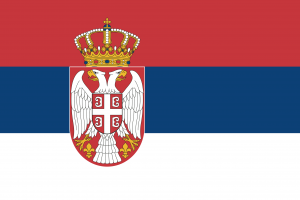Language/Serbian/Grammar/Adjectives:-Comparative-and-Superlative
 Հայերէն
Հայերէն Български език
Български език 官话
官话 官話
官話 Hrvatski jezik
Hrvatski jezik Český jazyk
Český jazyk Nederlands
Nederlands English
English Suomen kieli
Suomen kieli Français
Français Deutsch
Deutsch עברית
עברית हिन्दी
हिन्दी Magyar
Magyar Bahasa Indonesia
Bahasa Indonesia فارسی
فارسی Italiano
Italiano 日本語
日本語 Қазақ тілі
Қазақ тілі 한국어
한국어 Lietuvių kalba
Lietuvių kalba Νέα Ελληνικά
Νέα Ελληνικά Şimali Azərbaycanlılar
Şimali Azərbaycanlılar Język polski
Język polski Português
Português Limba Română
Limba Română Русский язык
Русский язык Español
Español العربية القياسية
العربية القياسية Svenska
Svenska Wikang Tagalog
Wikang Tagalog தமிழ்
தமிழ் ภาษาไทย
ภาษาไทย Türkçe
Türkçe Українська мова
Українська мова Urdu
Urdu Tiếng Việt
Tiếng ViệtIn this lesson, we will explore the comparative and superlative forms of adjectives in the Serbian language. As a Serbian language teacher with over 20 years of experience, I have found that adjectives are an essential part of the language and play a significant role in communication. By the end of the lesson, you will be able to compare people, places, and things in Serbian using these forms and expand your vocabulary.
Comparative Adjectives
Comparative adjectives are used to compare two people, places, or things. In Serbian, you can create a comparative adjective in two ways:
1. By adding -ји to the adjective stem and declining it as a regular adjective. 2. By using the word "od" (meaning "than") with the nominative case of the adjective.
Let's see some examples:
| Serbian | Pronunciation | English | ||||||
|---|---|---|---|---|---|---|---|---|
| visok | ['v̞ǐsok] | tall | viši | ['v̞ǐʃi] | taller | On je viši od mene. | [ɔn jɛ 'v̞ǐʃi ɔd 'mɛnɛ] | He is taller than me. |
In the examples above, we can see that we formed the comparative of visok by adding -ји to the adjective stem, and we formed the sentence "On je viši od mene" to compare the height of two people using the word "od" and the nominative case of the adjective.
Let's see more examples:
- Moj auto je brži od tvog. (My car is faster than yours.)
- Ovaj grad je lepši od onog. (This city is more beautiful than that one.)
- Mačka je lenja, a pas je marljiviji. (The cat is lazy, but the dog is more hardworking.)
Superlative Adjectives
Superlative adjectives are used to describe something as the best, the most, or the least. In Serbian, you can create superlative adjectives in two ways:
1. By adding -ји to the adjective stem and declining it as a regular adjective with the suffix -и. 2. By using the word "naj" (meaning "the most" or "the least") in front of the comparative form of the adjective.
Let's see some examples:
| Serbian | Pronunciation | English | ||||||
|---|---|---|---|---|---|---|---|---|
| visok | ['v̞ǐsok] | tall | najviši | ['najʋ̞ǐʃi] | the tallest | Ovaj toranj je najviši u gradu. | [ɔv̞aj 'tǒraj jɛ 'najʋ̞ǐʃi u 'ɡrǎdu] | This tower is the tallest in the city. |
In the examples above, we can see that we formed the superlative of visok by adding -ји to the adjective stem and declining it with the suffix -и, and we formed the sentence "Ovaj toranj je najviši u gradu" to describe the tower as the tallest using the word "naj" and the comparative form of the adjective.
Let's see more examples:
- Ovo je najlepši grad na svetu. (This is the most beautiful city in the world.)
- Moja mama pravi najbolje kolače. (My mom makes the best cakes.)
- Oni su najgori učenici u razredu. (They are the worst students in the class.)
Irregular Comparative and Superlative Adjectives
Just like in English, some adjectives in Serbian have irregular comparative and superlative forms. Here are some examples:
| Serbian | Pronunciation | English | ||||||
|---|---|---|---|---|---|---|---|---|
| dobar | ['dɔbar] | good | bolji | ['bɔʎi] | better | najbolji | ['najbɔʎi] | the best |
| loš | ['lɔʃ] | bad | gori | ['ɡɔri] | worse | najgori | ['najɡɔri] | the worst |
| veliki | ['ʋ̞êliki] | big | veći | ['ʋ̞êtʃi] | bigger | najveći | ['naʎʋ̞êtʃi] | the biggest |
In the examples above, we can see that the comparative and superlative forms of dobar, loš, and veliki are irregular and should be learned by heart.
Conclusion
In this lesson, we explored the comparative and superlative forms of adjectives in Serbian. Adjectives are an essential part of the language and can help us communicate more effectively. By learning different ways of comparing and describing people, places, and things, students can expand their vocabulary and improve their communication skills in Serbian.
Sources
Related Lessons
- Verbs: Present Tense
- Verbs: Participles
- Prepositions
- Verbs: Past Tense
- How to Use Have
- Nouns
- Give your Opinion
- Present Tense
- Pronouns

